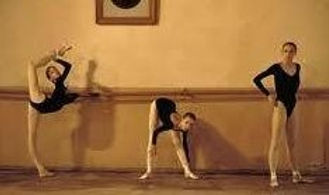
GOODNESS, ART, MUSIC,
DANCE, YOGA, NATURE
MOVEMENT THERAPY
The Truth of Being is in the Harmonious Integration of Mind, Body, Spirit and Emotion.
If I could explain it, I wouldn't need to dance it! Isadora Duncan
MOVEMENT THERAPY
The Truth of Being is in the Harmonious Integration of Mind, Body, Spirit and Emotion.
If I could explain it, I wouldn't need to dance it! Isadora Duncan

MENTAL HEALTH BENEFITS OF EXERCISE, DANCE AND MOVEMENT
MENTAL HEALTH BENEFITS OF EXERCISE, DANCE AND MOVEMENT
Exercise is one of the most effective ways to improve your mental health. Exercise can have a positive and
profound impact on depression, anxiety, ADHD, and more. It also relieves stress, improves memory, helps you sleep better, and boosts your overall mood.
Dance is a great form of exercise as it is fun, engaging and entertaining as well as a great workout
The technique of Isadora Duncan Dance is naturally therapeutic being self referral, non critical, forgiving, and encouraging self expression
Exercise and depression
Research show that exercise can treat mild to moderate depression as effectively as antidepressant medication— without the side-effects, of drugs. In addition to relieving depression symptoms, studies also shows that maintaining an exercise schedule can prevent you from relapsing.
Exercise is a powerful depression fighter for many reasons. Most importantly, it promotes all kinds of changes in the brain, including neural growth, reduced inflammation, and new activity patterns that promote feelings of calm and well-being. It also releases endorphins, powerful chemicals in your brain that energize your spirits and make you feel good. Finally, exercise can also serve as a distraction, allowing you to find some quiet time to break out of the cycle of negative thoughts that feed depression.
BIOENERGETICS
Bioenergetics is a progressive method of psychotherapy that facilitates emotional healing through resolution of bodily tension.
It is a form of psychodynamic psychotherapy that combines work with the body and mind to help people resolve their emotional problems and realize more of their potential for ease and joy in living.

Take a Look at Movement Therapy and Progress to Well Being~








Victory over obstacles to exercise
Now you know that exercise will help you feel much better. But taking that first step might be difficult. Obstacles to exercise are real—more so when you’re also struggling with mental health. Here are some common issues and how you can get past them.
Feeling exhausted. When you’re tired or stressed, it feels like working out will just make it worse. But the truth is that physical activity is a powerful energizer. Studies show that regular exercise can dramatically reduce fatigue and increase your energy levels. If you are really feeling tired, promise yourself a 5-minute walk. Chances are, you’ll be able to go five more minutes.
Feeling overwhelmed, stressed or depressed, the thought of adding another obligation can seem overwhelming. Working out might not be attractive. If you have children, you might have to arrange childcare while you exercise. Just remember that physical activity helps us do everything else better. If you begin thinking of physical activity as a priority, you will soon find ways to fit small amounts into a busy schedule.
Feeling hopeless. Even if you’re starting at “ground zero,” you can still workout. Exercise helps you get in shape. If you have no experience exercising, start slow with low-impact movement a few minutes each day.
Feeling bad about yourself. Are you your own worst critic? It’s time to try a new way of thinking about your body. No matter your weight, age or fitness level, there are others like you with the same goal of getting fit. Try surrounding yourself with people in your shoes. Take a class with people at a variety of fitness levels. Accomplishing even the smallest fitness goals will help you gain body confidence.
Feeling pain. If you have a disability, severe weight problem, arthritis, or any injury or illness that limits your mobility, talk to your healthcare provider about ways to safely exercise. You shouldn’t ignore pain, but rather do what you can, when you can. Divide your exercise into shorter, more frequent chunks of time if that helps, or try exercising in water to reduce joint or muscle discomfort.
INFO & TIP
Locking your knees, As In Ballet, might make standing upright and still easier, but decreases the use of your leg muscles in standing. This causes the blood to pool in your legs, effectively taking it out of circulation. Less blood in circulation means less oxygen getting to the brain, as in ballerinas
